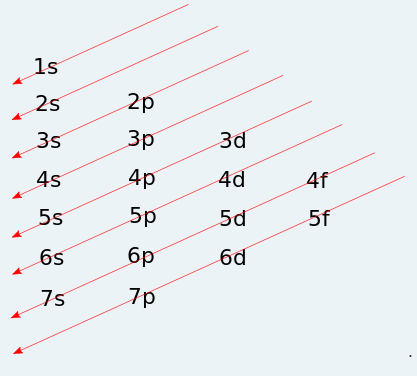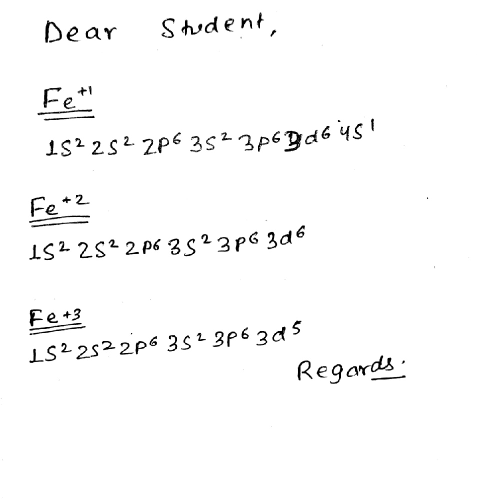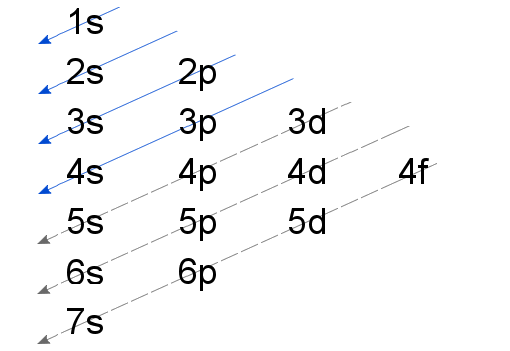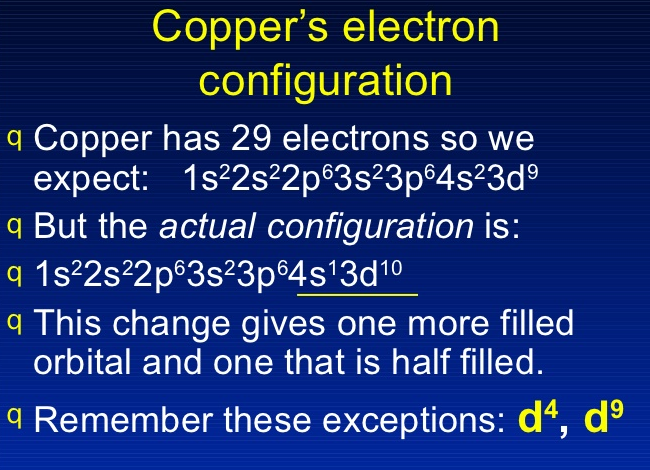Table of Contents
Ground state electron configuration is the foundation for understanding molecular bonding, properties, and structures. From the electrons in an atom to the differing orbitals and hybridization, the ground state electron configuration sheds light on many different atomic properties. Fundamentally, understanding electron configuration leads to an understanding of the periodic table.
In 1913, Niels Bohr proposed that electrons could orbit an atom at a certain distance without collapsing into the atom and that each orbit distance had its own energy level. He proposed that each orbital’s angular momentum, M, was equal to a multiple, n, of Plank’s constant, h, divided by 2π. This gives the equation: M = nħ where ħ= h/2π and n= 1,2,3,4. This model proposed the Bohr atom, which shows circular orbits surrounding the nucleus.
Ground State Electron Configurations
Electron configurations are written so as to clearly show the number of electrons in the atom as well as the number of electrons in each orbital. Each orbital is written in sequence, with the number of electrons in each orbital written in superscript to the right of the orbital name. The final electron configuration is a single string of orbital names and superscripts. For example, sodium has 11 protons and 11 electrons. Its electron configuration is 1s2 2s2 2p6 3s1. If you add up the superscripts, you can see that it adds up to the 11 electrons characteristic of sodium. To determine the order of notation for electron configurations, the orbitals with the lowest energy level will be filled in first, shown by the order noted in the diagram below.

Ground-state Electron Configuration Of Fe3+
In writing the electron configuration for Iron the first two electrons will go in the 1s orbital. Since 1s can only hold two electrons the next 2 electrons for Iron go in the 2s orbital. The next six electrons will go in the 2p orbital. The p orbital can hold up to six electrons. We’ll put six in the 2p orbital and then put the next two electrons in the 3s. Since the 3s if now full we’ll move to the 3p where we’ll place the next six electrons. We now shift to the 4s orbital where we place the remaining two electrons. After the 4s is full we put the remaining six electrons in the 3d orbital and end with 3d6.
Therefore the Iron electron configuration will be 1s22s22p63s23p64s23d6. Note that when writing the electron configuration for an atom-like Fe, the 3d is usually written before the 4s. Both of the configurations have the correct numbers of electrons in each orbital, it is just a matter of how the electronic configuration notation is written.

Therefore we have 1s22s22p63s23p63d64s2 For the Fe2+ ion we remove two electrons from 4s2 leaving us with: 1s22s22p63s23p63d6
For the Fe3+ ion we remove a total of three electrons (two from the 4s2 and one form the 3d6) leaving us with 1s22s22p63s23p63d5 1s2 2s2 2p6 3s2 3p6 3d5
The configuration notation provides an easy way for scientists to write and communicate how electrons are arranged around the nucleus of an atom. This makes it easier to understand and predict how atoms will interact to form chemical bonds.
Ground-state Electron Configurations For Silicon (Si)
When adding electrons, the lowest energy levels are always filled first. This is shown by the Aufbau principle shown here-1s22s22p63s23p2

Ground-state Electron Configurations For Copper (Cu)
one electron will be removed from the 4s subshell. However, the electron configuration for the neutral Cu atom is [Ar]3d10 4s1. Copper, and chromium as well, are two exceptions. Copper has this configuration because a full d10 subshell has lower energy, therefore it prefers filling up the 3d subshell with 10 electrons and then leaving the 4s subshell with only one electron. Because of this exception, the electron configuration for the Cu+ ion would mean removing one electron from the 4s1 subshell, thus leaving us with [Ar]3d10

What Is The Ground State Electron Configurations?
Let’s Review. The Ground State Electron Configuration Is The Arrangement Of Electrons Around The Nucleus Of An Atom With Lower Energy Levels. The Electrons Occupying The Orbitals Of Varying Energy Levels Naturally Falls Towards The Lowest Energy State Or Ground State.
Why Is Electron Configurations Important?
The Important Aspect Is That We Realize That Knowing Electron Configurations Helps Us Determine The Valence Electrons On An Atom. This Is Important Because Valence Electrons Contribute To The Unique Chemistry Of Each Atom. This Is Important When Describing An Electron Configuration In Terms Of The Orbital Diagrams.
What Is The Ground State Electron Configurations Of Magnesium?
Magnesium Atoms Have 12 Electrons And The Shell Structure Is 2.8.2. The Ground State Electron Configuration Of Ground State Gaseous Neutral Magnesium Is [Ne].3S2 And The Term Symbol Is 1S0.
How Many Orbitals Are In Magnesium?
For The Element Of Magnesium, You Already Know That The Atomic Number Tells You The Number Of Electrons. That Means There Are 12 Electrons In A Magnesium Atom. Looking At The Picture, You Can See There Are Two Electrons In Shell One, Eight In Shell Two, And Two More In Shell Three.
What Is The Ground State Electron Configurations For Aluminum?
Aluminum Atoms Have 13 Electrons And The Shell Structure Is 2.8.3. The Ground State Electron Configuration Of Ground State Gaseous Neutral Aluminium Is [Ne].3S2.3P1 And The Term Symbol Is 2P1/2.
